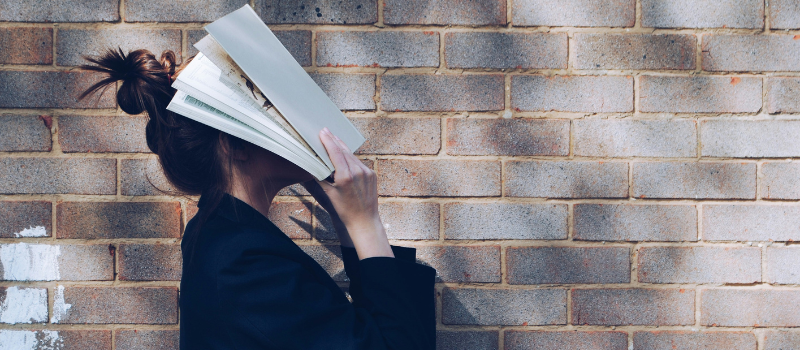You've tried all the study habits, haven't you?
The color-coded calendars. The motivational quotes taped to your mirror. The apps that gamify your study sessions with cute little streaks and badges (and don’t forget the confetti). You've watched YouTube videos about how Harvard students organize their notes and tried to copy that one friend who somehow makes everything look stupid easy.
And yet, here you are. Again.
Because most traditional study habits have the lifespan of a fruit fly.
They start strong, full of promise and good intentions. Then life happens. You miss a day. Then two. Then suddenly you're back to cramming the night before exams like some sort of academic vampire.
The problem isn't your willpower, though. It's your approach.
You've been trying to build study habits the same way most people try to lose weight — with unsustainable intensity and zero understanding of how habits actually work. You go from zero to hero overnight, then wonder why you can't maintain it.
But imagine if learning became something you just do, not something you have to constantly motivate yourself to start?
That's exactly what happens when you understand the psychology behind habits that stick like glue.
These strategies aren't about studying harder or longer…we all have enough of that. They're about making studying so downright easy and automatic that not doing it feels weird.
Let’s build some study habits that actually last.
What Makes Study Habits Actually Stick?

Most people think habits are about discipline. They're not. They're about psychology.
A habit is basically your brain's way of being lazy — except it’s a good thing.
Once your brain figures out a reliable pattern (cue, routine, reward), it stops thinking and starts operating on autopilot. That's why you can brush your teeth while mentally planning your day or drive home while mindlessly bingeing a podcast.
Your brain loves automation because it saves energy. The problem with that is most study "habits" never actually become habits because they're missing the must-have elements.
Here's what separates real habits from wishful thinking:
- Consistency beats intensity. Studying for 20 minutes every day creates stronger neural pathways than cramming for 5 hours once a week. Your brain builds habits through repetition more than heroic efforts.
- Cues are everything. Every habit needs a trigger that tells your brain "time to start the routine." Without a clear cue, you're relying on memory and motivation, and both of which are unreliable.
- The reward has to be immediate. Your brain doesn't care about your GPA next semester. It cares about how you feel right now. Habits stick when there's an immediate payoff instead of a distant hope.
- Environment shapes behavior more than willpower. If your study space is cluttered with distractions, you'll get distracted (imagine that). If your textbook is buried under a pile of laundry, you won't study. Design your environment to make good choices easier and bad choices harder.
- Identity drives action. People who see themselves as "learners" or "students" naturally do things that learners do. When studying becomes part of who you are, not just what you do, the habit becomes unshakeable.
The magic happens when all these elements align: clear cue + easy routine + immediate reward + supportive environment + identity alignment = habits that stick like glue.
The Real Science (Not Bro Science) Behind Sustainable Study Habits

Forget everything you've heard about "21 days to build a habit." That number comes from a plastic surgeon in the 1960s who noticed patients took about 21 days to adjust to their new appearance. Somehow this became gospel for all habit formation.
The actual research tells a different story.
Dr. Phillippa Lally's study at University College London found that habits take an average of 66 days to become automatic — but that’s just an average. The actual range was gigantic, from 18 to 254 days depending on the complexity of the behavior and the person.
Here's what neuroscience actually shows about habit formation:
- Your brain has two systems for decision-making. System 1 is fast, automatic, and habit-driven. System 2 is slow, deliberate, and energy-intensive. Habits live in System 1, and that’s why they feel effortless once established.
- The basal ganglia is your habit headquarters. This ancient part of your brain stores behavioral patterns and triggers them automatically when it recognizes familiar cues. Brain scans show that as habits form, activity actually decreases in the decision-making areas and increases in the automatic pattern-recognition areas.
- Repetition rewires your brain (literally). Each time you repeat a behavior, you strengthen the neural pathway associated with it. This is called "use-dependent plasticity" — the more you use it, the stronger it gets. Also, see spaced repetition for better learning.
- Context matters more than motivation. Research shows that 45% of daily behaviors happen in the same location and time. Your environment acts as a powerful cue that triggers automatic behaviors without conscious thought.
- Small habits compound faster than big ones. Studies on behavior change show that people who start with tiny habits (reading one page, doing one push-up) have much higher success rates than those who attempt big ol’ changes.
- The dopamine hit happens before the reward, not after. Your brain releases dopamine when it anticipates a reward, not exactly when it receives one. This is why habit cues trigger the craving that drives the behavior.
Ultimately, sustainable study habits aren't built through willpower or motivation. They're built by understanding and working with your brain's natural habit-formation mechanisms.
8 Study Habits That Stick Like Glue
Let’s ditch the typical "sit down and study for 3 hours" habits. These are the psychological tricks that make learning feel as automatic as checking your phone.
The habits that feel ridiculously easy are the ones that become unbreakable. Your brain doesn't resist what doesn't feel like work.
Here are research-backed habits that practically stick themselves:
- Start Stupidly Small — Make the habit so tiny you can't say no
- Stack Your Study Sessions — Attach new habits to existing ones
- Design Your Environment — Make studying easier than not studying
- Use Implementation Intentions — Plan exactly when, where, and how
- Track Systems, Not Outcomes — Focus on showing up
- Build in Natural Rewards — Make the process itself enjoyable
- Plan for Obstacles — Prepare for when life gets messy (it will)
- Focus on Identity Change — Become someone who learns
1. Start Stupidly Small
Make your study habit so ridiculously tiny that you feel silly not doing it.
The biggest mistake people make is starting too big. "I'm going to study for 2 hours every day!" sounds mighty impressive, but it's also terrifying to your brain. When a habit feels overwhelming, your brain will find every excuse to avoid it.
Research shows that people who start with micro-habits have higher success rates than those who attempt major changes. The goal isn't to learn everything immediately — it's to make studying feel automatic.
How to do it: Commit to studying for just 2 minutes every day. Seriously. Two minutes. Read one page. Review one flashcard. Do one practice problem. Once this feels automatic (usually 2-4 weeks), you can gradually increase the time. But not before.
2. Stack Your Study Sessions

Attach your new study habit to an existing habit you already do consistently.
Habit stacking works because it uses an established neural pathway as a launchpad for a new behavior. Instead of relying on memory or motivation, you create an automatic if-then sequence: "After I do X (existing habit), I will do Y (new study habit)."
Studies show that people who use habit stacking are times more likely to maintain new behaviors compared to those who rely on arbitrary schedules.
How to do it: Pick a habit you already do every day without thinking (morning coffee, checking email, brushing teeth). Immediately after that habit, do your study session. "After I pour my morning coffee, I will review my flashcards for 5 minutes" creates an automatic trigger that doesn't require willpower.
3. Design Your Environment
Make studying the path of least resistance and distractions the path of most resistance.
Your environment shapes your behavior more powerfully than your willpower. If your study materials are buried under clutter while your phone is right next to you, guess what you'll reach for? Environmental design works because it removes the need for constant decision-making.
Research consistently shows that people in well-designed environments make better choices automatically, without relying on self-control.
How to do it: Set up a dedicated study space with everything you need within arm's reach. Put your phone in another room or use an app blocker. Remove visual distractions. Make your study materials more accessible than entertainment options. The easier it is to study and the harder it is to get distracted, the more likely you'll study.
4. Use Implementation Intentions
Plan exactly when, where, and how you'll study before you need to make the decision.
Implementation intentions work by creating specific if-then plans that bypass the decision-making process. Instead of vague goals like "I'll study more," you create precise triggers: "If it's 7 PM and I'm in my bedroom, then I will study biology for 20 minutes."
Studies show that people who use implementation intentions are more likely to follow through on their goals because they remove the cognitive load of deciding when and how to act.
How to do it: Write down exactly when, where, and what you'll study. Be specific: "At 8 AM, after breakfast, I will sit at my desk and review yesterday's notes for 15 minutes." The more specific your plan, the more automatic the behavior becomes.
5. Track Systems, Not Outcomes
Focus on whether you showed up instead of whether you learned everything perfectly.
Most people track the wrong things. They focus on grades, test scores, or how much material they covered. Yes, those things can matter, but what’s more important: actually learning the material or simply learning how to pretend you know the material?
Plus, these outcomes are often delayed and dependent on factors outside your control. System tracking focuses on the behavior itself — did you do the habit?
Research shows that people who track process goals (behaviors) are more likely to achieve outcome goals (results) than those who only track outcomes.
How to do it: Mark an X on a calendar every day you complete your study habit, regardless of how much you accomplished. Did you study for your planned 10 minutes? X. Did you only manage 3 minutes? Still an X. The goal is consistency, not perfection. Celebrate showing up.
6. Build in Natural Rewards

Make the study process itself enjoyable.
Yes, it’s about the journey instead of the destination.
Your brain needs immediate rewards to reinforce habits, but most study benefits are delayed (better grades, job prospects, knowledge). You need to create immediate positive feelings during or right after studying to strengthen the habit loop.
Studies show that people who find ways to make tasks inherently rewarding are more likely to maintain behaviors long-term without external motivation.
How to do it: Pair studying with something you enjoy (good music, favorite coffee, comfortable space). Use study methods that feel engaging (flashcards, teaching concepts out loud, drawing diagrams). Celebrate small wins immediately after studying. Treat yo’ self!
7. Plan for Obstacles
Prepare for when motivation disappears and life gets chaotic. Because, trust me, it will. It always will.
The difference between habits that stick and habits that break is planning for obstacles. Most people only plan for perfect conditions, then abandon their habits the moment things get difficult. Successful habit-builders anticipate problems and create solutions in advance.
Don’t panic if you miss a day, though. Research shows that minor hiccups won’t derail your habit. Just make sure your teeny-tiny detours don’t snowball into habit breakers.
How to do it: Identify your most common obstacles (busy schedule, feeling tired, overwhelming workload) and create specific plans for each. "If I'm running late in the morning, then I'll study during lunch." "If I'm exhausted after work, then I'll do just 2 minutes of review." A plan removes the need to make decisions when you're stressed.
8. Focus on Identity Change
Become someone who learns.
Powerful habits come from identity change. When studying becomes part of who you are rather than something you do, the behavior becomes automatic. People act in ways that are consistent with their identity, even when no one is watching.
Research shows that people who focus on identity-based habits ("I am a learner") maintain behaviors longer than those who focus on outcome-based habits ("I want better grades").
How to do it: Start thinking of yourself as a learner or student, regardless of your formal education status. Use identity-reinforcing language: "I'm someone who studies every day" instead of "I'm trying to study more." Every time you complete your study habit, you're casting a vote for this new identity. Small votes add up to big identity shifts.
How to Make Your Study Habits Bulletproof (or at Least Netflix Proof)
Now, to put it all together into a plan you can actually execute. Because all of the best practices in the world won’t help if you can’t actually get those study habits to stick around. Here are a few ideas to help you get started (and stick with it):
- Get started. Like, now. You’re spending time studying about studying (which is a great place to start), but the next step is to close this tab (yes, that means saying goodbye), and do the actual studying.
- Pick a single strategy. The best way to overwhelm yourself and get stuck in a procrastination loop is to commit to everything at once. Don’t do that. Instead, pick one of the study habits that we covered, and double-down on it. Yes, just one. You can scale to more later once you’ve mastered this one.
- Give yourself some grace. You’re going to fall down at some point. It’s natural, and it’s to be expected. When (not if) it happens, don’t beat yourself up. We’ve all been there, and it’s only human. Dust yourself off, get back up, and put yourself back in the habit.
- Create minimum viable habits. Your "real" habit might be studying for 30 minutes, but your bulletproof version is 2 minutes. On terrible days, you do the 2-minute version. This keeps the neural pathway active without overwhelming your depleted willpower.
- Embrace "good enough" days. Some days you'll be on fire. Other days you'll barely function. Both are normal. The goal isn't to be perfect — it's to be consistent. A mediocre study session is infinitely better than no study session.
- Track your obstacles. Keep a simple log of what derails you. Is it always Thursday afternoons? Social media? Certain emotions? Once you identify your patterns, you can plan for them with more intention.
Your Study Habit Action Plan
You've got the science. You've got the strategies. Now comes the moment that separates the habit-builders from the wanna-bes.
Pick one habit. Just one. Not eight. Not three. One. Maybe it's 2 minutes of flashcard review after your morning coffee. Maybe it's reading one page before bed. Maybe it's doing one practice problem after lunch.
Now, make it stupidly small. If your instinct is "30 minutes of studying," make it 5. If you're thinking 5 minutes, make it 2. Your ego will hate this, but your brain will love it. You can always do more once the habit sticks, but you can't sustain what you never start.
Start now. Not Monday. Not next week. Not tomorrow. The perfect moment doesn't exist, but this exact moment in time definitely does.
.png)


